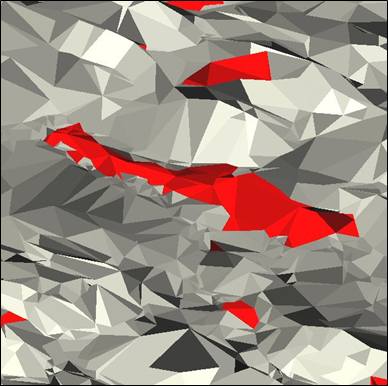Much of a career consists of hard work with other members of a team, working on a project that all can take pride in, but which few can really take ownership of, since so many other people are involved.
However, every so often, a project comes along that, because of its uniqueness or because it made a difference, remains extra special and stands out as a highlight.
Here are some projects that I performed or contributed to that I really take pride in when I think back over my years of consulting and teaching.
- MSAT shadow mapping project (1996): In the early 1990’s, the BC government created MASCOT, a program to transmit GPS differential correction signals in real time to users anywhere in the province. Because BC is so large, the only practical way to do that was by geostationary satellite. However, because BC is fairly far north and has many mountainous areas, even a satellite solution isn’t perfect. Some of those mountains prevent signals from reaching the receiver, and the farther north you go, the more significant the problem gets. We needed to map the radio shadows created by the mountains so that we could map where the satellite signal was available. To do this, we created Digital Elevation Models for each of the 1:250,000 scale NTS map sheets in the province. My supervisor hit upon the idea of calculating the altitude and azimuth of the satellite at the centre of each sheet. Since the satellite is in geostationary orbit above the equator (latitude 0) at a particular longitude, we were able to determine the altitude of the satellite above the local horizon and the azimuth, based on the difference in latitude. Once these values were known for each sheet, we used the hillshade command was used to determine where the shadows fell. By calculating the hillshades for each map sheet and then merging them together, we were able to calculate the shadows for the entire province.
- Marmot Habitat Maps (1998): The Vancouver Island Marmot

Vancouver Island Marmot (marmota vancouverensis) (Marmot Recovery Foundation)
(marmota vancouverensis) is Canada’s most endangered species, and as its name suggests, lives only in alpine areas on Vancouver Island. In the late 1990s, there were fewer than 30 animals left. In response, a recovery program was developed to help ensure the survival of this animal. A captive breeding program was established, but one of the questions that remained unanswered was where marmots should be released. The known existing colonies were obvious targets, but not all of the historical colonies were known. Armed with extensive biological and habitat studies, I was able to model potential habitat quality on Vancouver Island, delivering printed maps to the Vancouver Island Marmot Recovery Team for their use. Today, the marmots are on their way to recovery, with over 200 individuals being found on 20 different mountain tops (https://marmots.org/about-marmots/current-status-2/). A subset of map sheets was later turned into an assignment for my Spatial Analysis class.
- Facet transportation planning exercise (2000): When I used to work for Facet Decision Systems, we worked on a model of the transportation infrastructure of Metro Vancouver. The idea was that transportation projects and funding options could be added “a la carte”, impact of each could be calculated. This project was made available to the public via the Internet, and people could try different combinations of taxes, transit fares, road use fees, bridges, roads, and rapid transit lines. Every option led to a traffic congestion and air quality model being generated, and all results were ranked and saved. Since this exercise, some of the transportation options that were available in the model such as the South Fraser Perimeter Road and the Canada Line rapid transit option were constructed. It was really interesting working with a comprehensive model that gave a glimpse into the near future of Greater Vancouver.
-

Small esker found in my study area near Prince George, BC
Confirmation of landform predictions (2007): During my Master’s thesis (2005), I developed a system to predict landforms based on a neural network being used to analyse a terrain model. In 2007, I was able to make a trip back to my Master’s thesis study area southwest of Prince George, B.C. When I completed my thesis, I was able to predict the existence of a number of eskers that were not mapped. Upon returning, I was able to navigate to the coordinates of the predicted eskers using a GPS receiver, and confirm that 4/6 of the predictions were correct. This confirmation led to the resurrection and further development of the technique as the Automated Landform Mapping Project.

Changes in park place attachment by season.
- Visualisation of Place Attachment (2016): An important concept in human geography and psychology is that of place attachment, the strong association that people develop to particular places. After years of data collection and developing data processing routines to visualise place attachment, I was able to put everything together in 2016 to finally visualise what parts of a city park people are most attached to. I was able to then use the data to disaggregate the data set by different criteria, such as the season (shown above), to show how external factors cause dynamic changes in place attachment.
